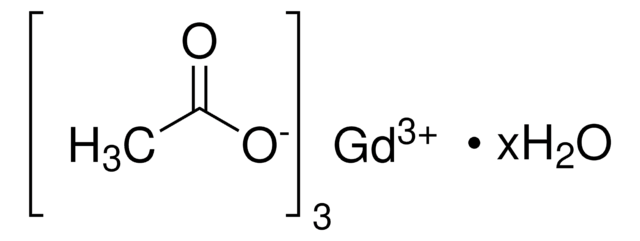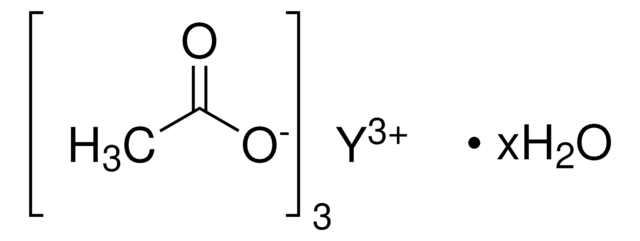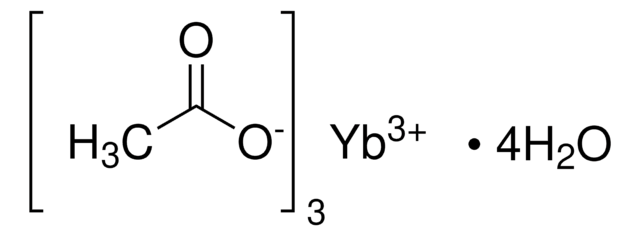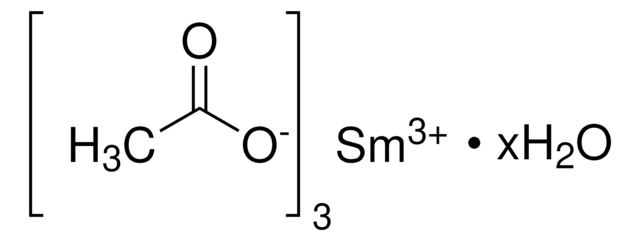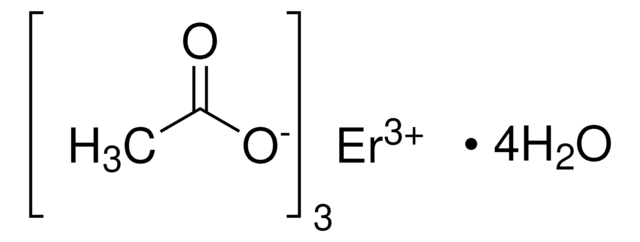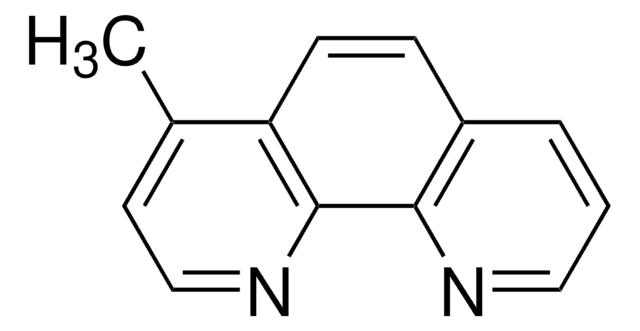367753
Cerium(III) acetate hydrate
99.9% trace metals basis
Synonym(s):
Cerium acetate hydrate, Cerium triacetate, Cerium(3+) triacetate hydrate
About This Item
Recommended Products
Assay
99.9% trace metals basis
form
powder and chunks
composition
Degree of hydration, 1-3
reaction suitability
core: cerium
reagent type: catalyst
impurities
≤1% acetic acid
SMILES string
O.CC(=O)O[Ce](OC(C)=O)OC(C)=O
InChI
1S/3C2H4O2.Ce.H2O/c3*1-2(3)4;;/h3*1H3,(H,3,4);;1H2/q;;;+3;/p-3
InChI key
AERUOEZHIAYQQL-UHFFFAOYSA-K
Looking for similar products? Visit Product Comparison Guide
Application
Storage Class Code
11 - Combustible Solids
WGK
WGK 3
Flash Point(F)
Not applicable
Flash Point(C)
Not applicable
Personal Protective Equipment
Choose from one of the most recent versions:
Already Own This Product?
Find documentation for the products that you have recently purchased in the Document Library.
Customers Also Viewed
Articles
The application of magnetism and magnetic materials pervades our modern civilization in the form of electrical power, communications and information storage.
The rare earth elements impact nearly everyone in the world. All of the people living in advanced technological countries and almost all those living in third world countries utilize the rare earths in their everyday living—the car that one drives (gasoline is refined from oil using rare earth catalysts and catalytic converters reduce the polluting emissions from the automotive exhaust), watching the news on TV (the red and green colors in TV screens), the telephones and computers we use to communicate (the permanent magnets in speakers and disc drives), just to name a few examples.
Our team of scientists has experience in all areas of research including Life Science, Material Science, Chemical Synthesis, Chromatography, Analytical and many others.
Contact Technical Service




